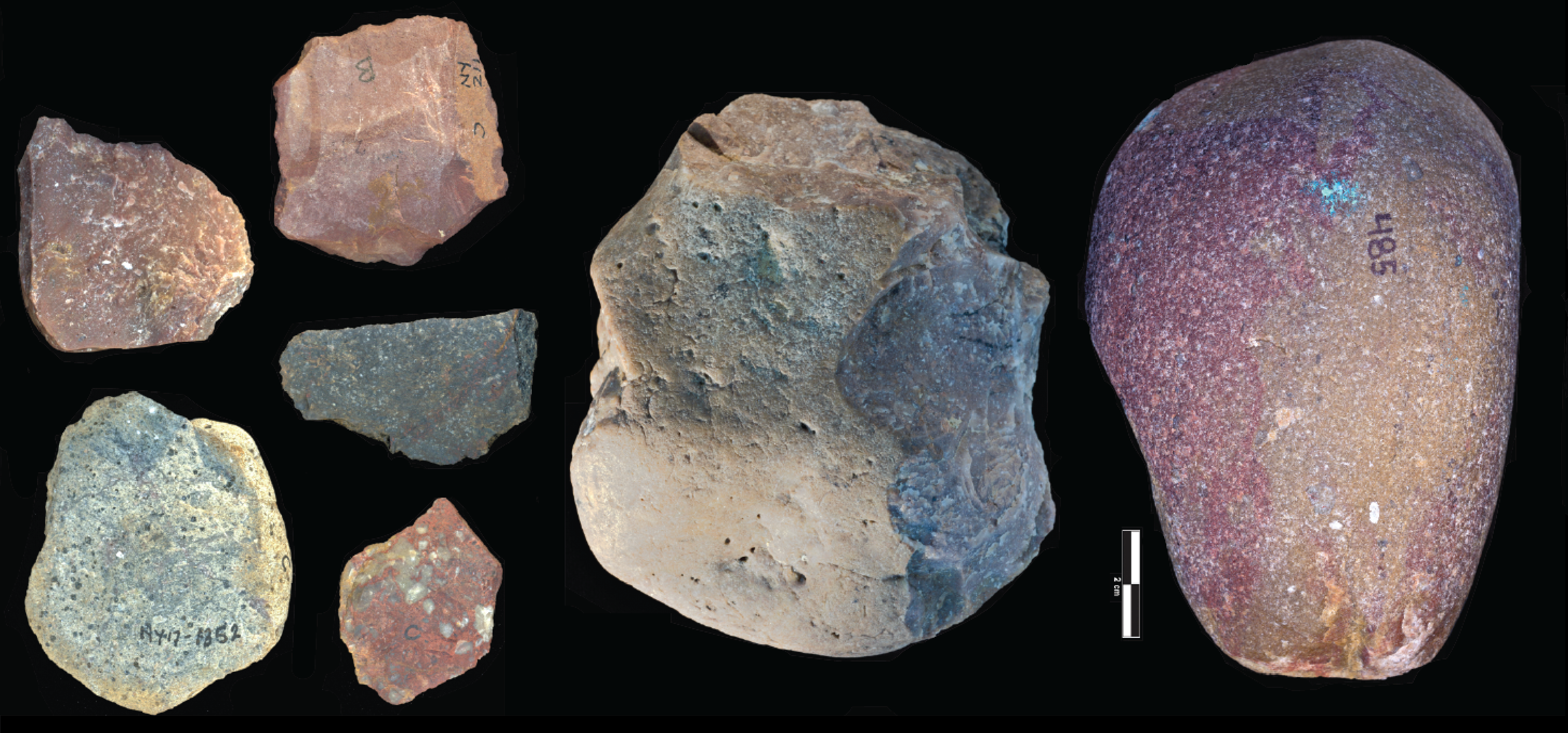Along the shores of Lake Victoria in Africa, archeologists have uncovered the oldest ever evidence of human ancestors using tools to butcher the meat of ancient hippopotamuses. Dating to roughly 2.9 million years old, the Stone Age toolkit shows the earliest found evidence of hominins chowing down on very large animals. It also raises questions about which ancient human ancestor was the first to craft tools.
The discoveries were made during an archeological dig in Nyayanga, located on the Homa Peninsula of western Kenya. Here, they found at least three different types of stone tools – hammerstones, cores, and flakes – which were used to cut, scrape, and pound both animals and plants.
Along with the toolkit, they found the oldest discovered fossilized teeth of a Paranthropus. Considered an indirect cousin of Homo sapiens, this extinct hominin would have perhaps looked a bit like a small gorilla that walked on two legs. This, the researchers say, raises some intriguing questions about who made these tools.
The style of the tools is known Oldowan, which describes very simple early stone tools that were made with one or a few flakes chipped off with another stone. As simple as they may be, the innovation of this technology was a major milestone in the story of ancient hominins.
Examples of an Oldowan percussive tool, core and flakes from the Nyayanga site show they had been used to cut meat and pound plants. Image credit: T.W. Plummer, J.S. Oliver, and E. M. Finestone, Homa Peninsula Paleoanthropology Project
“With these tools you can crush better than an elephant’s molar can and cut better than a lion’s canine can. Oldowan technology was like suddenly evolving a brand-new set of teeth outside your body, and it opened up a new variety of foods on the African savannah to our ancestors,” Rick Potts, senior study author and the National Museum of Natural History’s Peter Buck Chair of Human Origins, said in a statement.
Prior to this discovery, the oldest Oldowan stone tools were dated to 2.6 million years old and found in Ledi-Geraru, Ethiopia. This new research suggests that Oldowan technology emerged way earlier than thought and was likely to be more pervasive than previously appreciated.
Paranthropus molars recovered from Nyayanga site. Image credit: S. E. Bailey, Homa Peninsula Paleoanthropology Project
“This is one of the oldest if not the oldest example of Oldowan technology,” added Thomas Plummer of Queens College and a research associate in the scientific team of the Smithsonian’s Human Origins Program.
“This shows the toolkit was more widely distributed at an earlier date than people realized, and that it was used to process a wide variety of plant and animal tissues. We don’t know for sure what the adaptive significance was but the variety of uses suggests it was important to these hominins.”
The site also held at least 1,776 animal bones, namely hippopotamids and bovids. With this array of artifacts discovered in Nyayanga, the researchers are confident they’ve stumbled on the site of a prehistoric butcher shop where distant members of the human family prepared and hunted megafauna for dinner.
It would be another 2 million years before ancient hominins learned to control fire, so all of this food would have been served raw. The researchers imagine the tools might have been used to pound the meat into an easy-to-eat mush, a bit like a hippo tartare.
“The assumption among researchers has long been that only the genus Homo, to which humans belong, was capable of making stone tools,” Potts explained. “But finding Paranthropus alongside these stone tools opens up a fascinating whodunnit.”
The new study was published today in the journal Science.
Source Link: 2.9-Million-Year-Old Butchery Reveals Human Ancestors Had A Taste For Hippo
